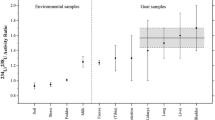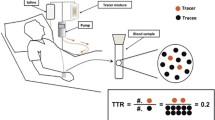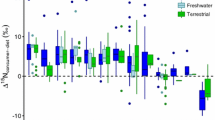Abstract
Tritium is a potentially important environmental contaminant originating from the nuclear industry, and its behaviour in the environment is controlled by that of hydrogen. Animal food products represent a potentially important source of tritium in the human diet and a number of transfer coefficient values for tritium transfer to a limited number of animal products are available. In this paper we present an approach for the derivation of tritium transfer coefficients which is based on the metabolism of hydrogen in animals. The derived transfer coefficients separately account for transfer to and from free (i.e. water) and organically bound tritium. A novel aspect of the approach is that tritium transfer can be predicted for any animal product for which the required metabolic input parameters are available. The predicted transfer coefficients are compared to available independent data. Agreement is good (R 2=0.97) with the exception of the transfer coefficient for transfer from tritiated water to organically bound tritium in ruminants. This may be attributable to the particular characteristics of ruminant digestion. We show that tritium transfer coefficients will vary in response to the metabolic status of an animal (e.g. stage of lactation, diet digestibility etc.) and that the use of a single transfer coefficient from diet to animal product is inappropriate. It is possible to derive concentration ratio values from the estimated transfer coefficients which relate the concentration of tritiated water and organically bound tritium in an animal product to their respective concentrations in the animals diet. These concentration ratios are shown to be less subject to metabolic variation and may be more useful radioecological parameters than transfer coefficients. For tritiated water the concentration ratio shows little variation between animal products ranging from 0.59 to 0.82. In the case of organically bound tritium the concentration ratios vary between animal products from 0.15 (goat milk) to 0.67 (eggs).
Similar content being viewed by others
Author information
Authors and Affiliations
Additional information
Received: 28 May 2001 / Accepted: 20 August 2001
Rights and permissions
About this article
Cite this article
Galeriu, D., Crout, N., Melintescu, A. et al. A metabolic derivation of tritium transfer coefficients in animal products. Radiat Environ Biophys 40, 325–334 (2001). https://doi.org/10.1007/s00411-001-0116-5
Issue Date:
DOI: https://doi.org/10.1007/s00411-001-0116-5




